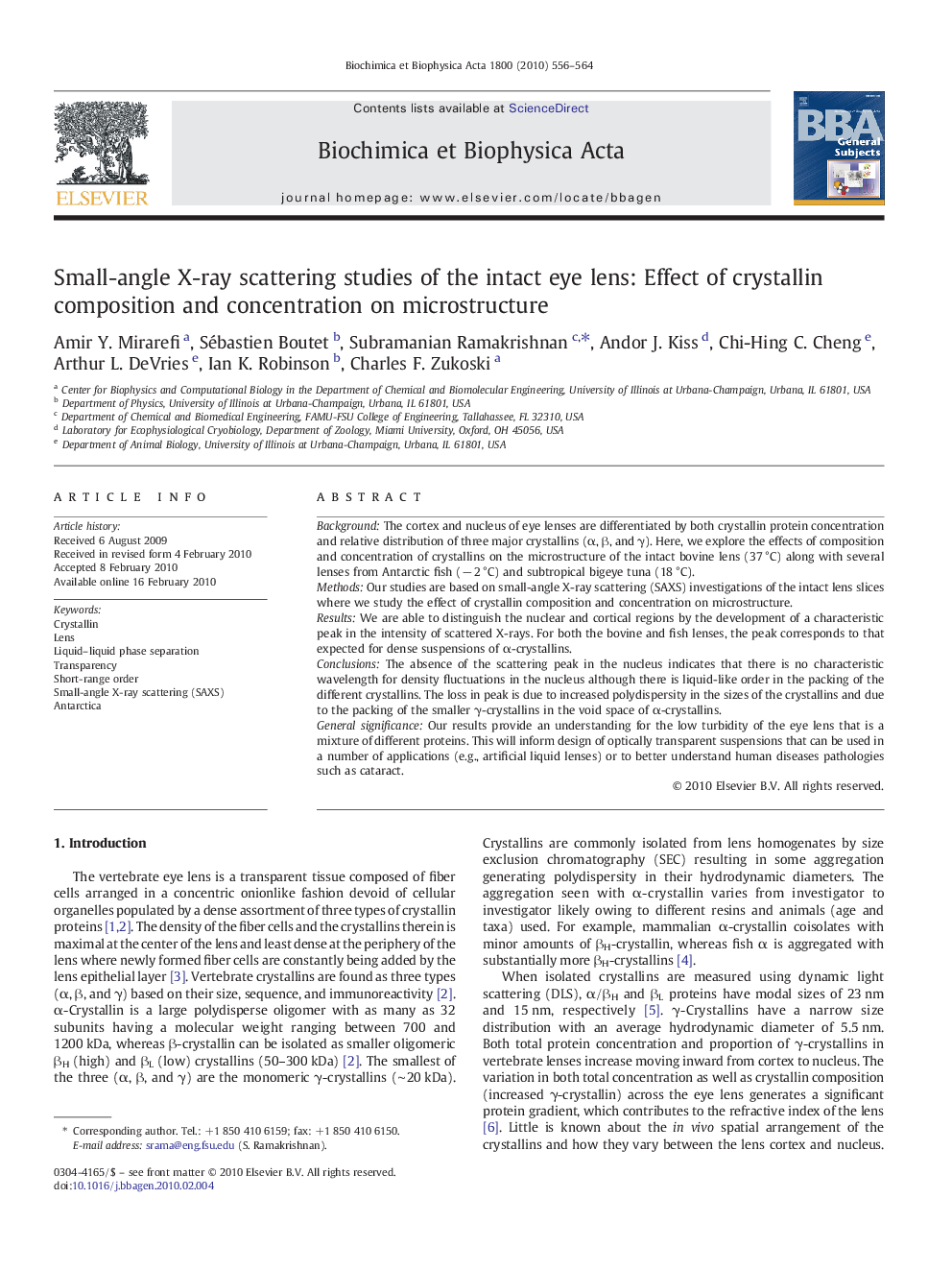| Article ID | Journal | Published Year | Pages | File Type |
|---|---|---|---|---|
| 1947970 | Biochimica et Biophysica Acta (BBA) - General Subjects | 2010 | 9 Pages |
BackgroundThe cortex and nucleus of eye lenses are differentiated by both crystallin protein concentration and relative distribution of three major crystallins (α, β, and γ). Here, we explore the effects of composition and concentration of crystallins on the microstructure of the intact bovine lens (37 °C) along with several lenses from Antarctic fish (− 2 °C) and subtropical bigeye tuna (18 °C).MethodsOur studies are based on small-angle X-ray scattering (SAXS) investigations of the intact lens slices where we study the effect of crystallin composition and concentration on microstructure.ResultsWe are able to distinguish the nuclear and cortical regions by the development of a characteristic peak in the intensity of scattered X-rays. For both the bovine and fish lenses, the peak corresponds to that expected for dense suspensions of α-crystallins.ConclusionsThe absence of the scattering peak in the nucleus indicates that there is no characteristic wavelength for density fluctuations in the nucleus although there is liquid-like order in the packing of the different crystallins. The loss in peak is due to increased polydispersity in the sizes of the crystallins and due to the packing of the smaller γ-crystallins in the void space of α-crystallins.General significanceOur results provide an understanding for the low turbidity of the eye lens that is a mixture of different proteins. This will inform design of optically transparent suspensions that can be used in a number of applications (e.g., artificial liquid lenses) or to better understand human diseases pathologies such as cataract.
